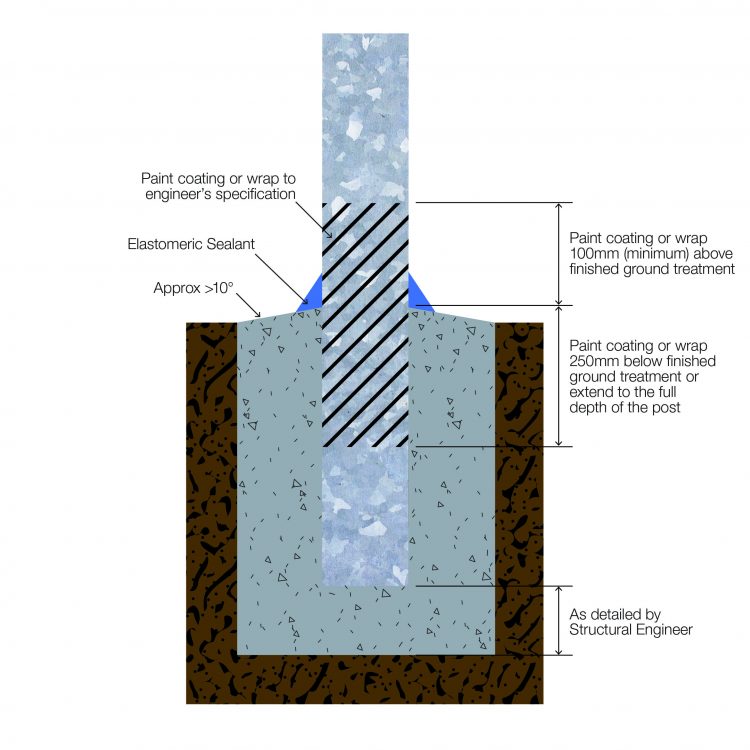A new report offers detailed advice on estimating the service life of hot dip galvanized steel. It covers everything from the effect of insecticides in rural areas to the varying corrosivity levels of different coastal environments.
A new report from the Galvanizers Association of Australia (GAA) is helping engineers understand how durability is affected across a range of more specific atmospheric conditions. The Guide to Durability of Hot Dip Galvanizing is now available online (it’s one of the association’s technical publications – free signup to download). It gives engineers detailed information that will help them calculate more accurate service life estimates.
From harsh solar radiation to highly corrosive coastal climates, the Australian atmosphere can be unfriendly to uncoated steel surfaces. As the GAA notes in its guide on the durability of hot dip galvanizing, “No coating has proven to be more durable and of such predictable performance in the Australian atmosphere for protecting steel.”
Helping to predict the performance of these coatings is one of the functions that the GAA takes seriously. The association recently announced its updated design manual for hot-dip galvanized steel was shifting online. Both the manual and the durability estimator are popular with engineers for use in planning and referencing their designs, however, this new report goes even further.
“The estimator is quite popular and helps to approximate durability. However, it only uses the distance from the coast to broadly calculate durability,” says Dr David Harrison, Market and Specification Engineer, GAA.
“We do get engineers contacting us for more specific advice relevant to the environments and micro-environments they are working with. That’s where this report comes in. It gives the full picture of how various elements interact with each other and affect the durability of galvanized steel.”
Ann Sheehan is the Corrosion and Sustainability Officer at the GAA, and the primary author of the new report. She says engineers can use the report to understand how galvanized steel will interact with their designs and the environments they exist in.
“For example, proximity to surf coasts and crashing surf can significantly reduce the life of a galvanized coating. However, in calmer coastal areas the effects are relatively benign if used more than 50 m from high tide.”
The guide offers a lot of helpful information, including how zinc corrodes in different kinds of water and the ideal way to embed galvanized posts in concrete (see image).
As designs are becoming more complex and new construction techniques are utilised, engineers are looking for more in-depth information that will help them make accurate service life predictions. That means going beyond broad information about corrosion.
For example, environments can have a variety of micro-environments. The impact of the degree of sheltering, proximity to corrosive influences, prevailing winds and other general atmospheric conditions can all add up.
In rural areas, for example, galvanized coatings can be reduced by aerial spraying of fertilizers and insecticides. In dry form the chemicals are harmless to the coating, but when wet by rainwater or irrigation they can form aggressive solutions that attack the coating.
“With this guide, you can discover how the durability of galvanized coatings on structural posts can be affected if they are underwater or embedded in soil, concrete or a range of other materials,” says Sheehan.
For any engineers working on designs across the Tasman, the report also adds details for New Zealand for the first time, calling out some of the country’s volcanic environments and differences in coastal settings.
“All of our advice aligns with both Australian and New Zealand Standards, and gives engineers the confidence to accurately estimate the design life of their galvanized materials and structures,” says Sheehan.
You can download the Guide to Durability of Hot Dip Galvanizing from the Technical Publications page at the GAA website.




